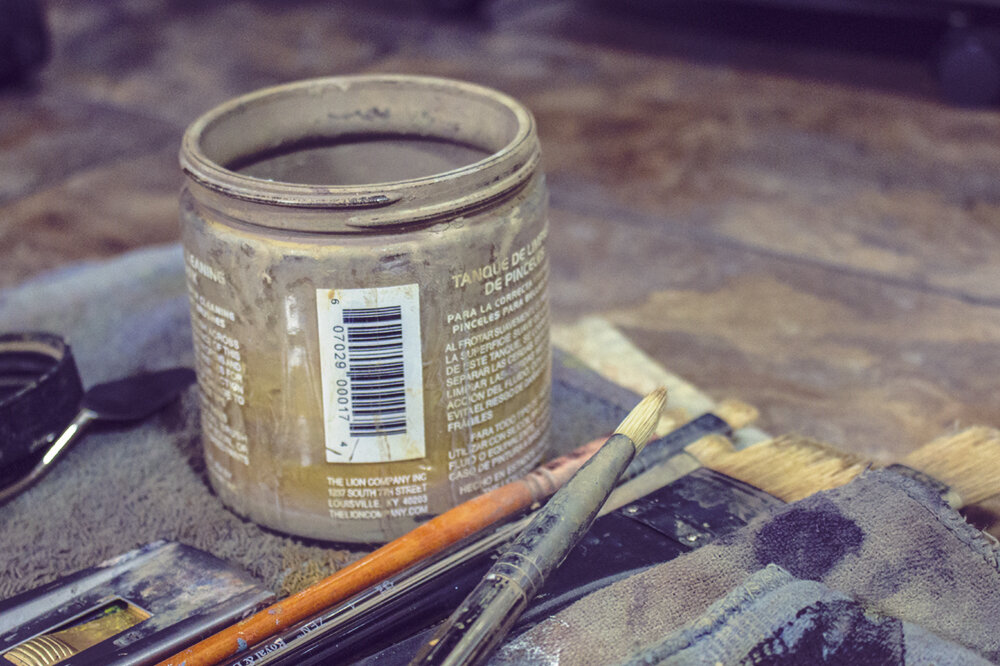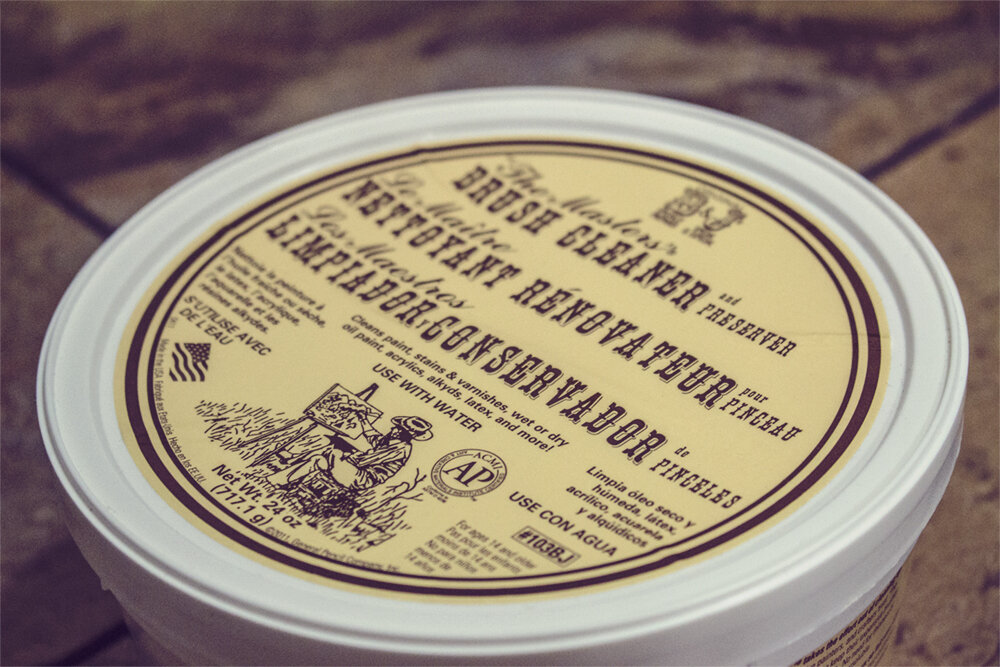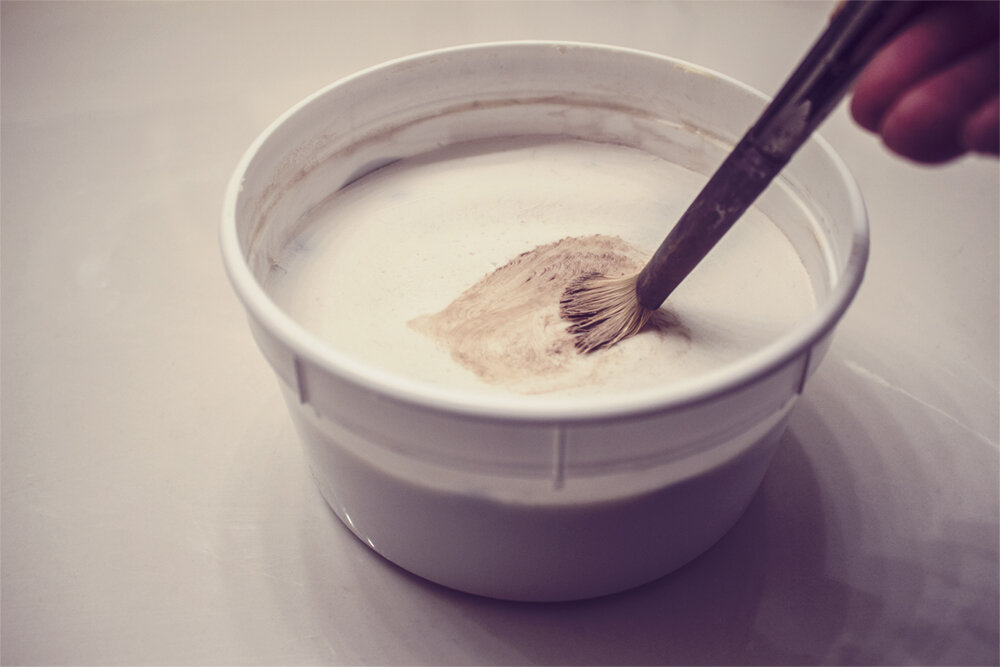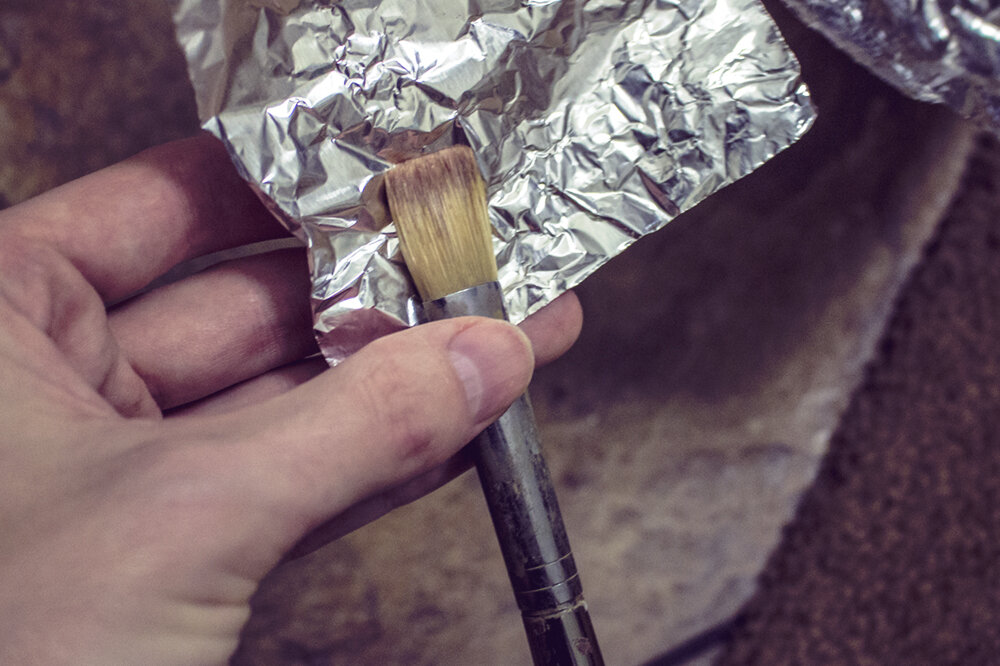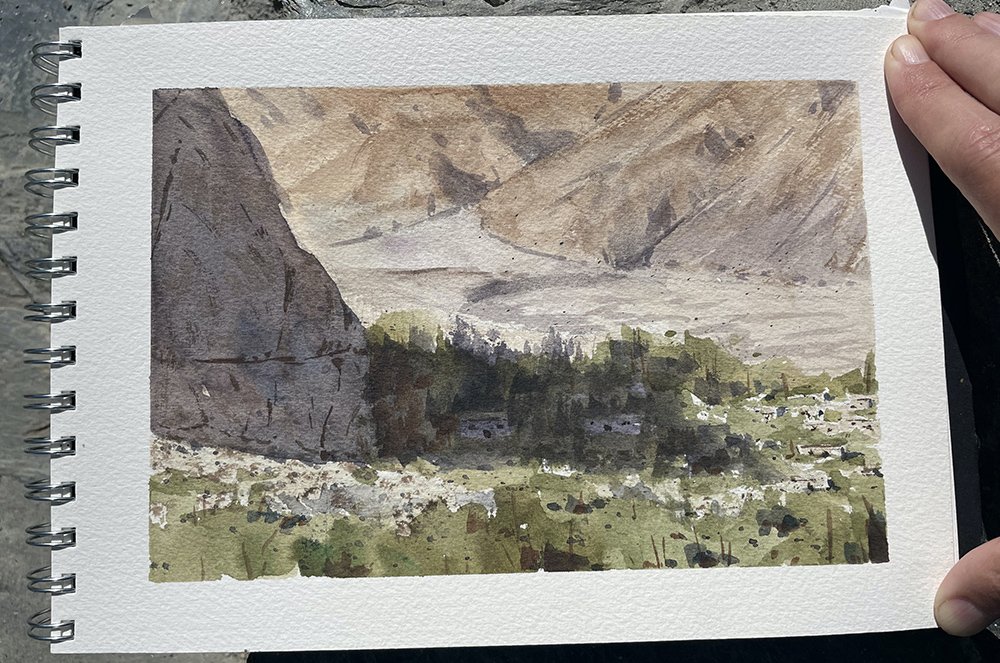Oil Painting Clean Up - My Process
In a recent post, I mentioned one of the differences I've noticed between using oils and using acrylics is a "lazier cleanup". I didn't have a chance to elaborate on what exactly that meant, so I'd like to do it here. My process of cleaning up with oils is quite similar to acrylics [you can view a video of that here] - after a painting session, I simply clean my brushes with soap and water. My full process is down below:
Materials
Rags [I tend to use old rags [socks, t-shirts, etc.] instead of paper towels, trying to be as eco-friendly as possible]
Silicoil Brush Cleaning Tank
Gamsol or Eco-Solve [thinner]
Masters Brush Cleaner & Preserver
Regular Cleaning
When painting with oils, I usually use Gamsol Odorless Mineral Spirits [or Eco-Solve] in a Silicoil Brush Cleaning Tank to occasionally clean off my brush to apply fresh color to the painting I'm working on. Most of the time I can just wipe my brush off on a rag between colors rather than using thinner. At the end of a painting session, my brushes will be cleaned off using thinner. I always wipe them on a rag before & after cleaning them off with Gamsol to get as much paint and thinner out as possible.
Deep Cleaning
Usually every week or so [or 2 or 3 paintings go by or if I know I won't be painting for a few days to weeks] I clean my brushes after painting using Master's Brush Cleaner & Preserver. This will keep your brushes soft and feeling like new. You can use this after every painting if you have the time. It doesn't take long depending on how many brushes you use or want to clean. The way I clean my brushes is simply wetting the bristles in water, scrubbing them into the brush cleaner and once the bristles are loaded with soap I gently massage the brush in the palm of my hand and work out all of the paint. Rinse & repeat process if needed. Of course, this isn't the only solution, its just the way I do it at this point in time.
Alright, so not exactly a 'lazier cleanup' but it really isn't much more complicated compared to acrylics. Cleaning up usually only takes literally 5 to 10 minutes. I'm always working to simplify my process and the way I do things in my life. My focus is eventually moving towards using less solvents and being more conscious of my health and the environment in regards to my studio and materials.
Alternatives & Solvent-Free Cleaning
Geneva Brush Dip - I would need to fashion up some kind of brush holder to use this but I'm looking forward to giving it a shot as I believe it would come in handy for a few situations. This brush dip is basically a mixture of artist-grade safflower oil and clove leaf oil. After a painting session, you wipe off excess paint from your brush with a rag or paper towel and simply dip your brush into the mixture and leave it for up to 2 weeks or longer. This would truly be a lazier cleanup.
There are also other soaps available such as Mona Lisa Pink Soap and W&N Brush Cleaner and Restorer, etc..
Cleaning Without Solvents
Here's a post describing how to clean your brushes without solvents: "Once the excess paint has been brushed out and squeezed out then get some safflower oil from the grocery store (this is cheaper than the variety you want to use for painting). Dip the brush in the oil and allow it to coat the bristles. Using your scrap canvas or towel, brush the oil soaked brush out to remove even more paint. Do this a few times until all traces of paint are gone. At this point your brush should be able to handle a soap and water washing without too much effort.." Source: http://www.williamsburgoils.com/blog/?p=103
Many folks clean their brushes using all different kinds of oil, BUT use paper towels to wipe off the oil - this is something I personally try to avoid. But I do like the idea of cleaning & painting without solvents and it is something I'm working towards.
If you know of any other alternatives, please post them in the comment section down below!
Bonus Tip: After I clean my brushes, I wrap them up nicely in some foil and shape the bristles into their optimal form. Next time I go to paint [or just the next day], I unwrap them and the brushes are shaped like new again.

